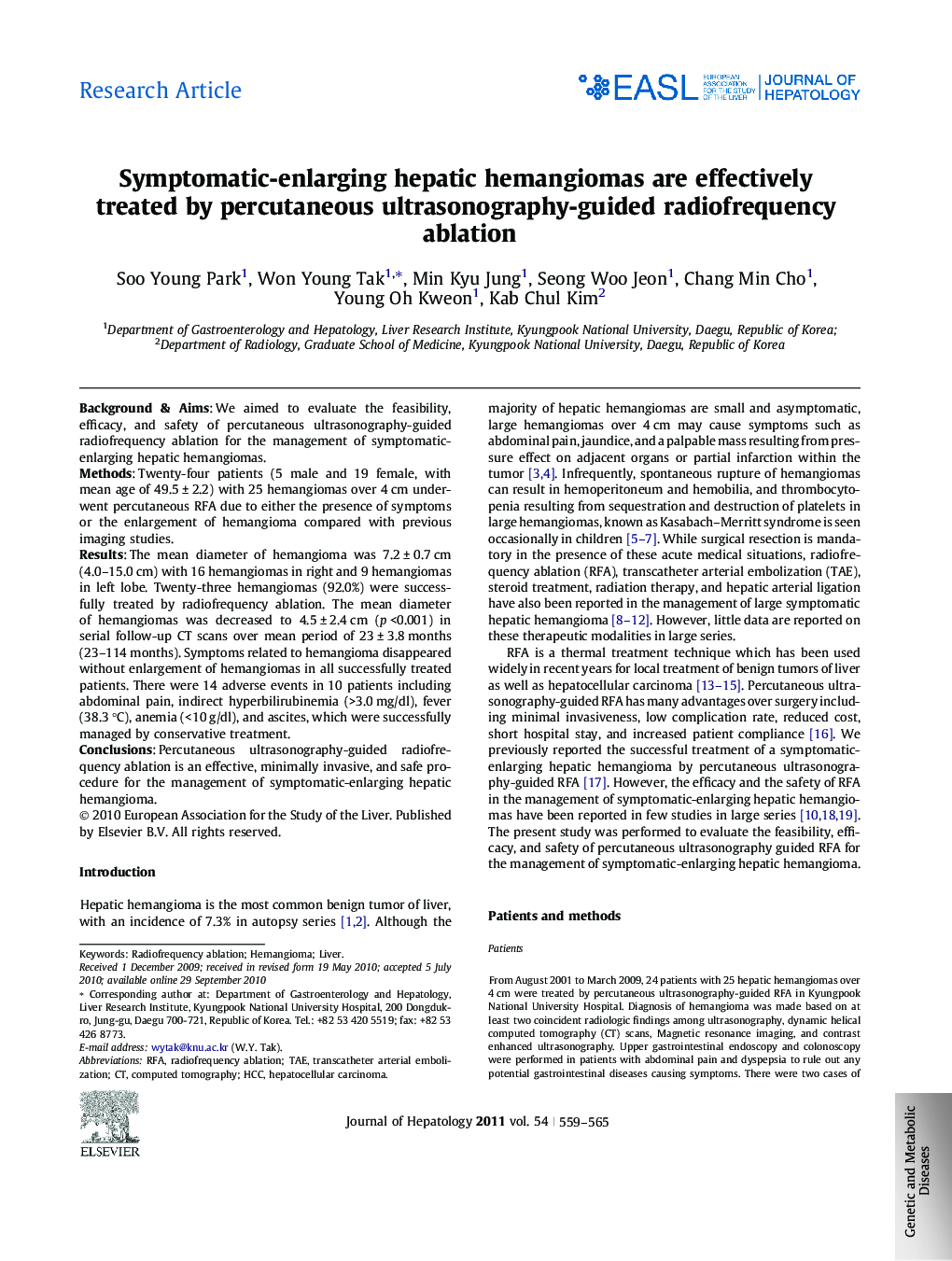| Article ID | Journal | Published Year | Pages | File Type |
|---|---|---|---|---|
| 6106902 | Journal of Hepatology | 2011 | 7 Pages |
Background & AimsWe aimed to evaluate the feasibility, efficacy, and safety of percutaneous ultrasonography-guided radiofrequency ablation for the management of symptomatic-enlarging hepatic hemangiomas.MethodsTwenty-four patients (5 male and 19 female, with mean age of 49.5 ± 2.2) with 25 hemangiomas over 4 cm underwent percutaneous RFA due to either the presence of symptoms or the enlargement of hemangioma compared with previous imaging studies.ResultsThe mean diameter of hemangioma was 7.2 ± 0.7 cm (4.0-15.0 cm) with 16 hemangiomas in right and 9 hemangiomas in left lobe. Twenty-three hemangiomas (92.0%) were successfully treated by radiofrequency ablation. The mean diameter of hemangiomas was decreased to 4.5 ± 2.4 cm (p <0.001) in serial follow-up CT scans over mean period of 23 ± 3.8 months (23-114 months). Symptoms related to hemangioma disappeared without enlargement of hemangiomas in all successfully treated patients. There were 14 adverse events in 10 patients including abdominal pain, indirect hyperbilirubinemia (>3.0 mg/dl), fever (38.3 °C), anemia (<10 g/dl), and ascites, which were successfully managed by conservative treatment.ConclusionsPercutaneous ultrasonography-guided radiofrequency ablation is an effective, minimally invasive, and safe procedure for the management of symptomatic-enlarging hepatic hemangioma.
